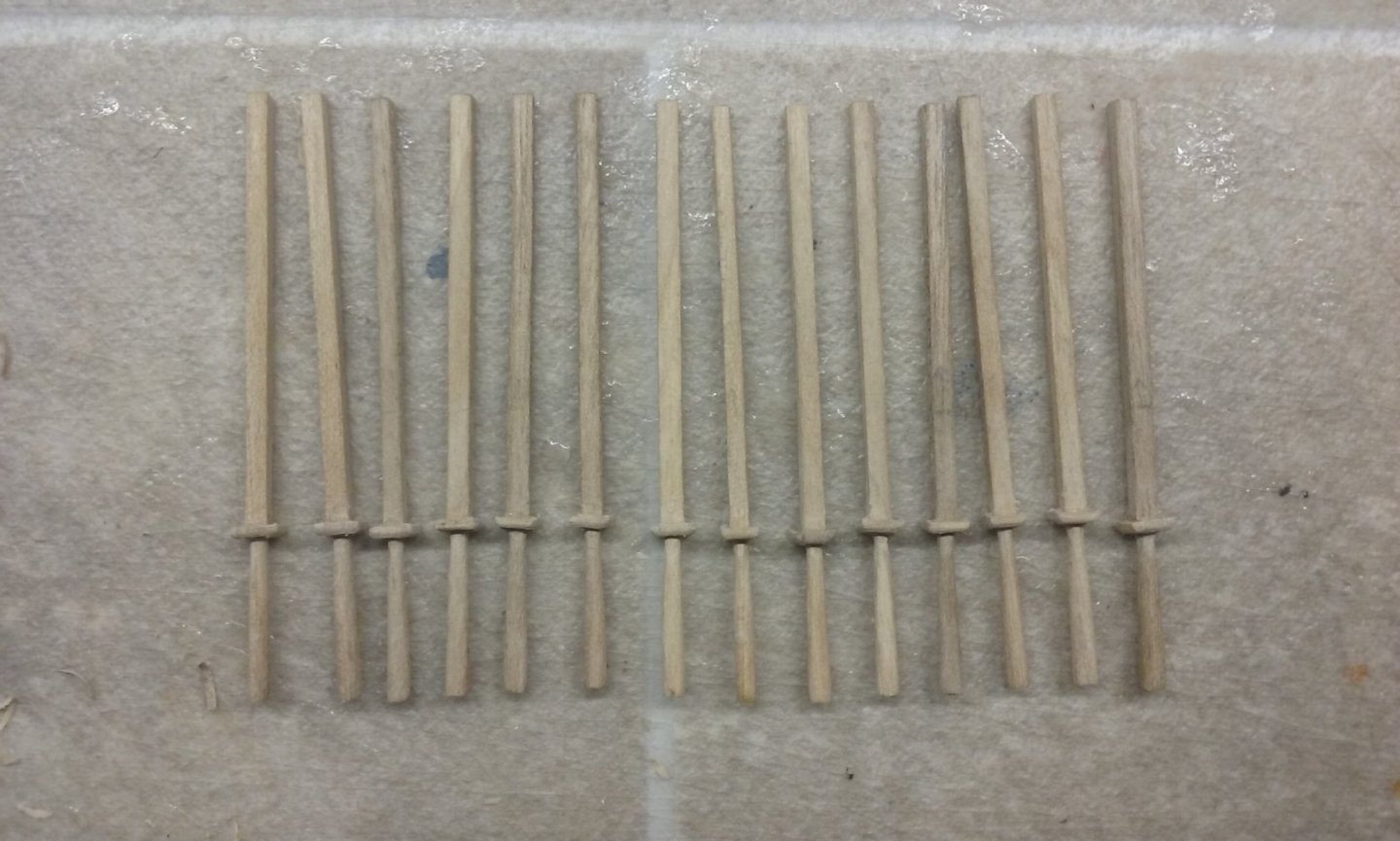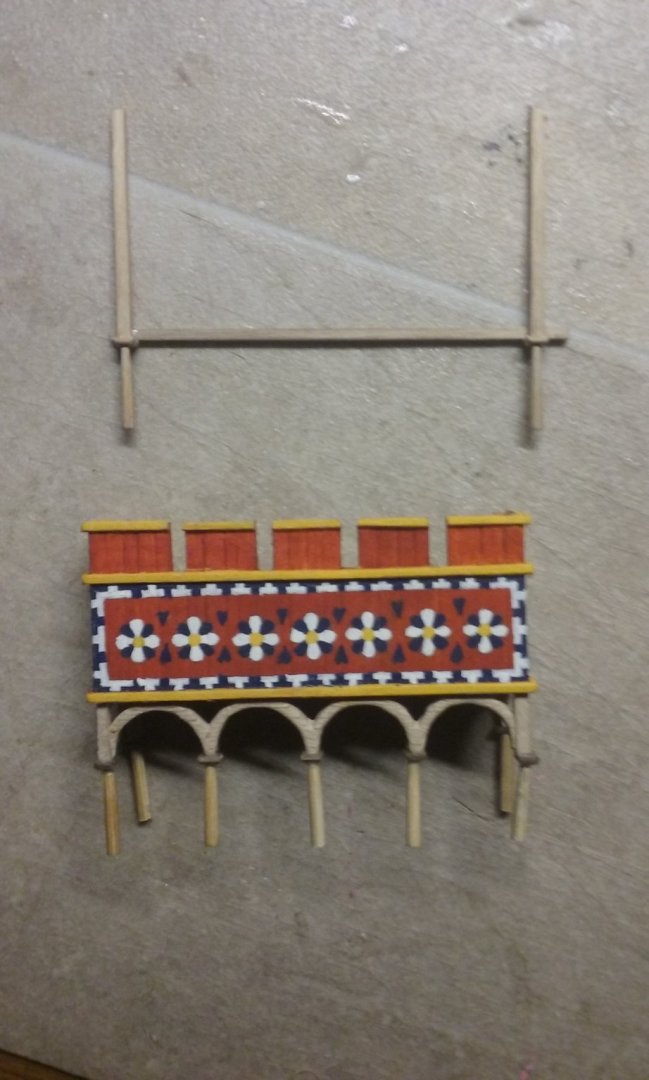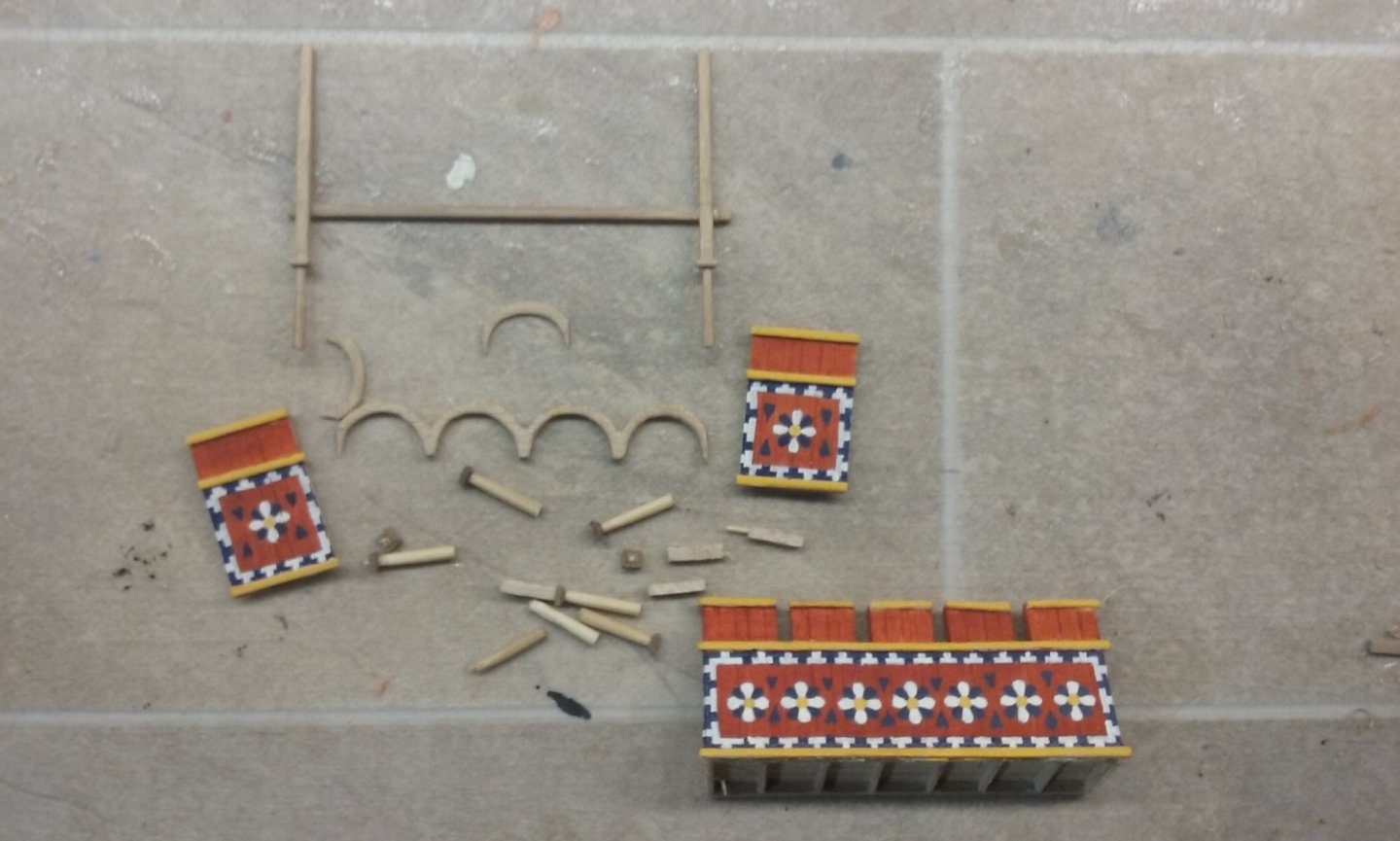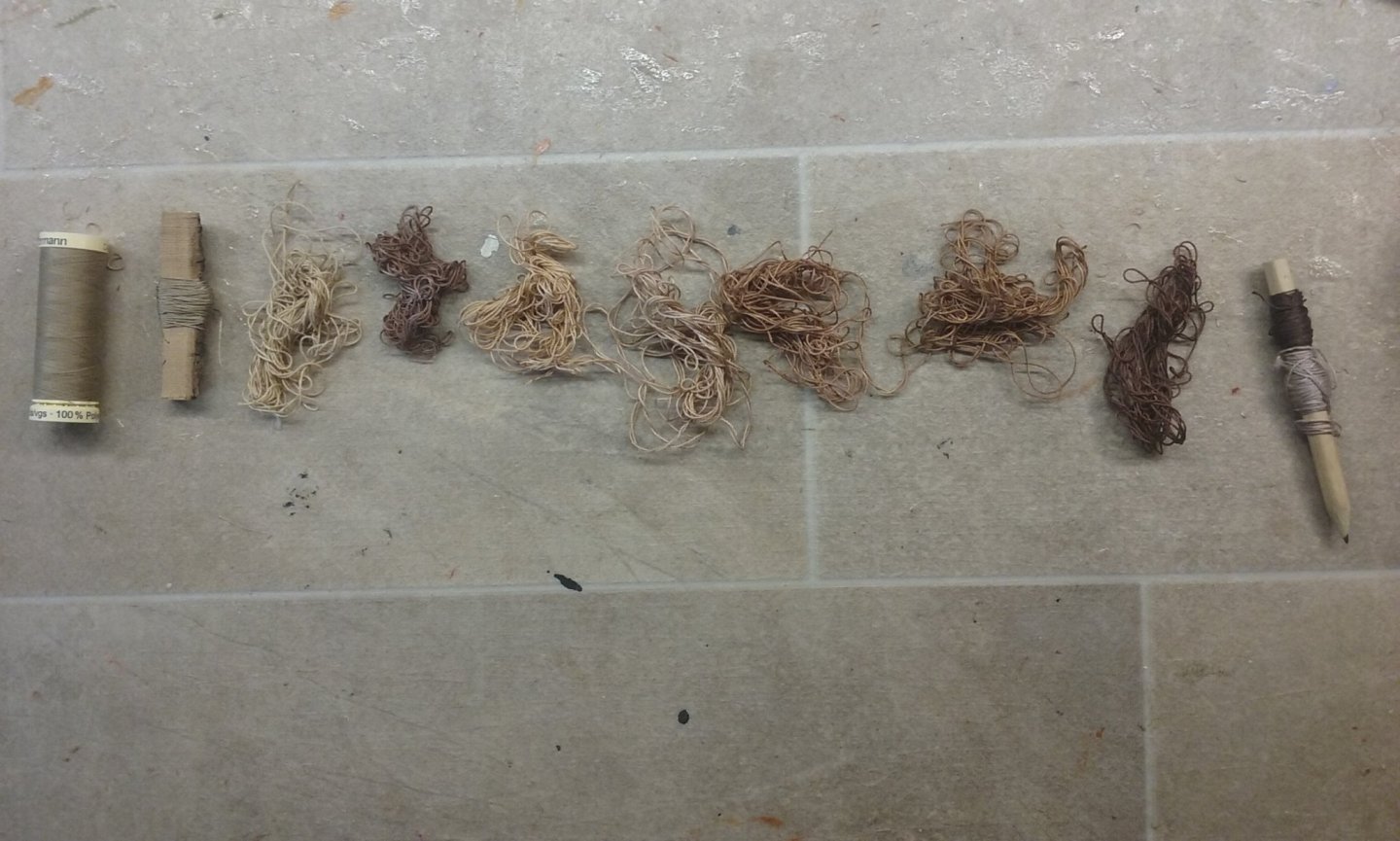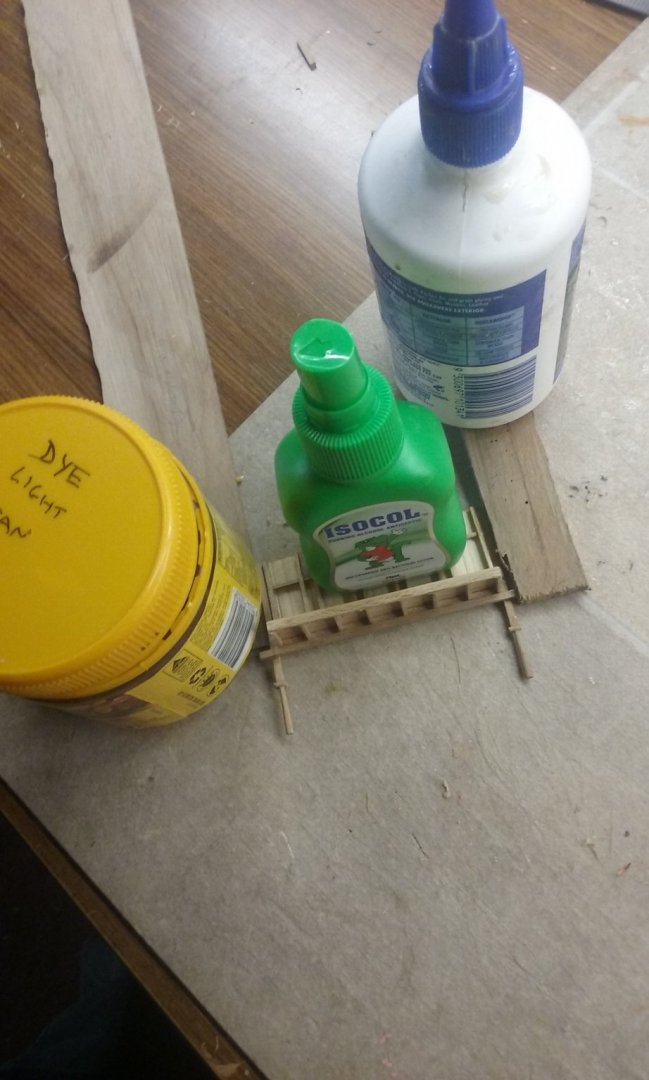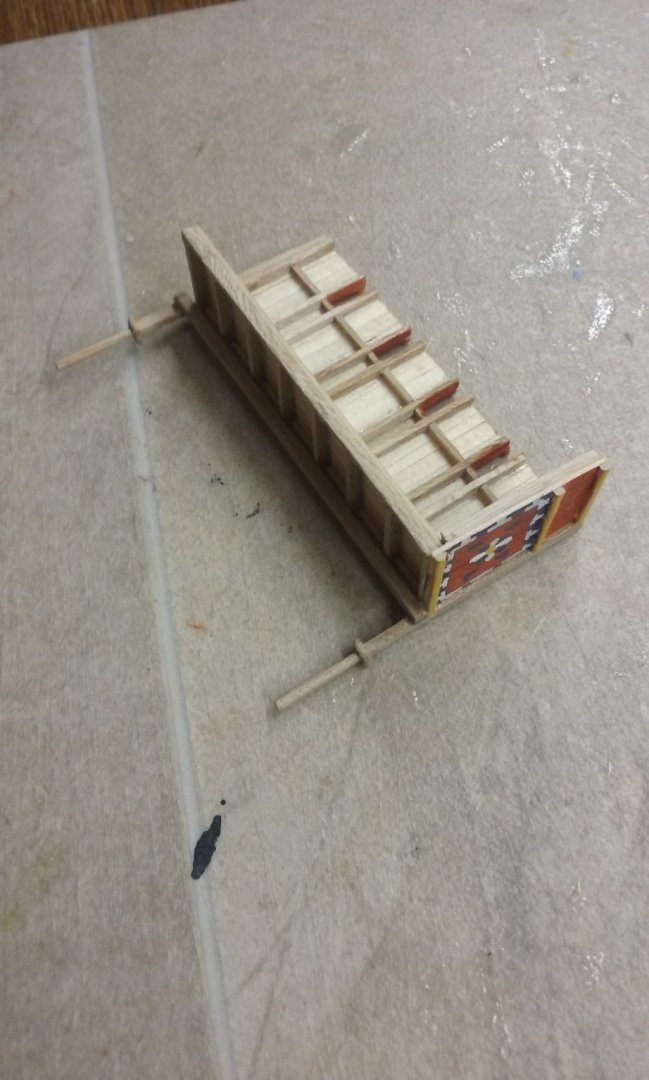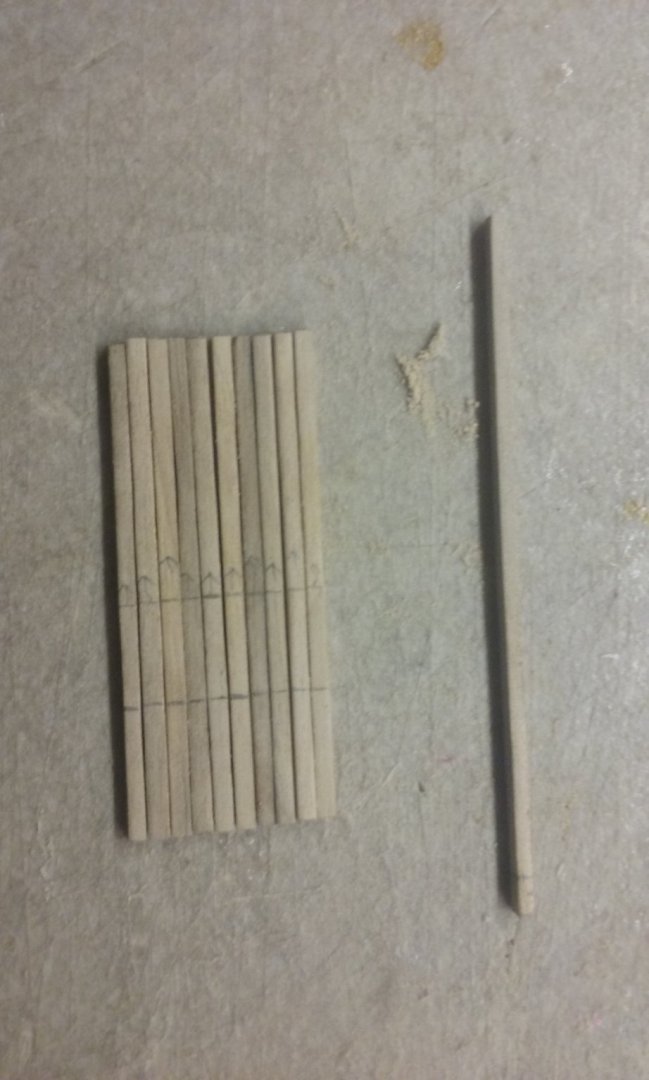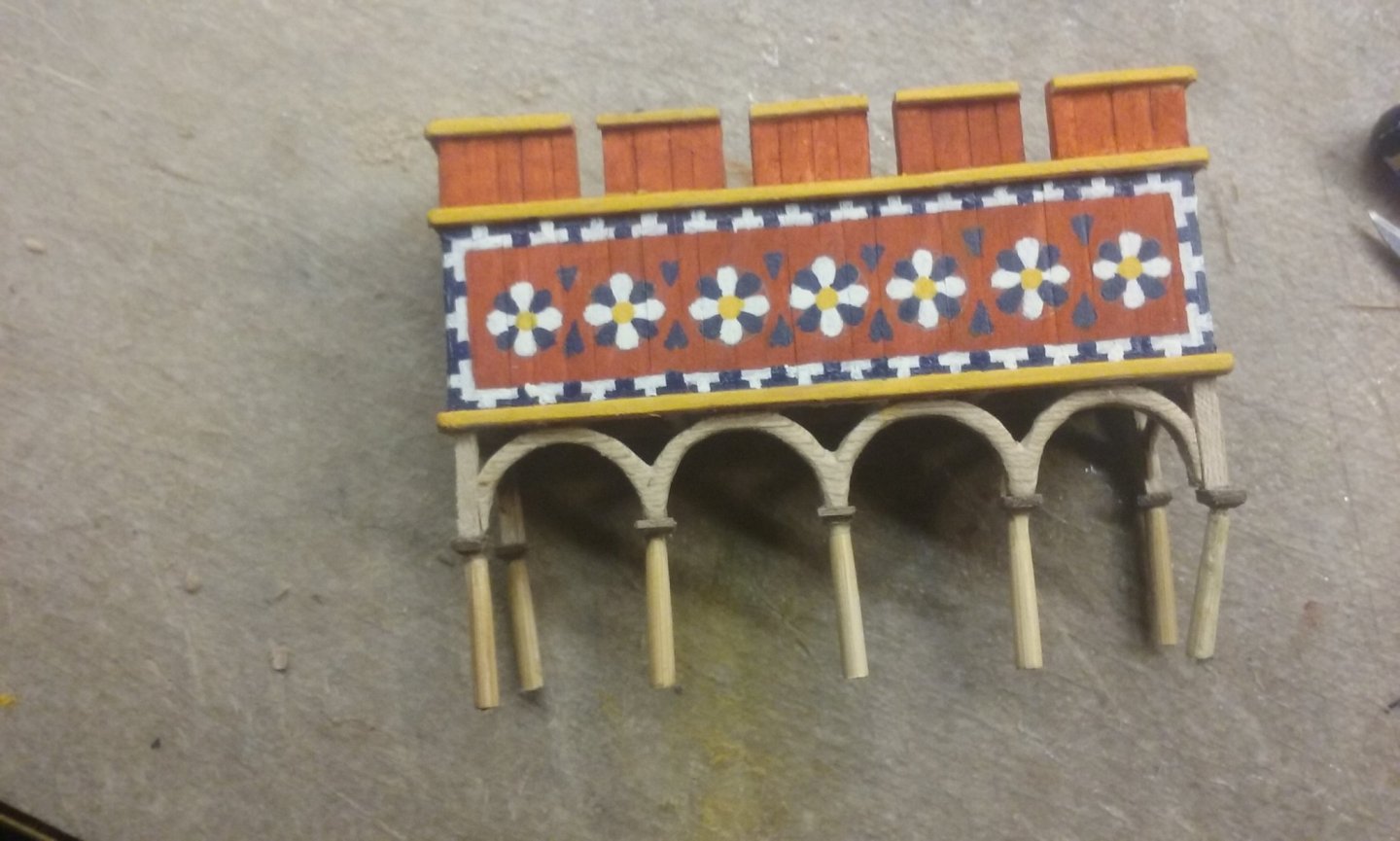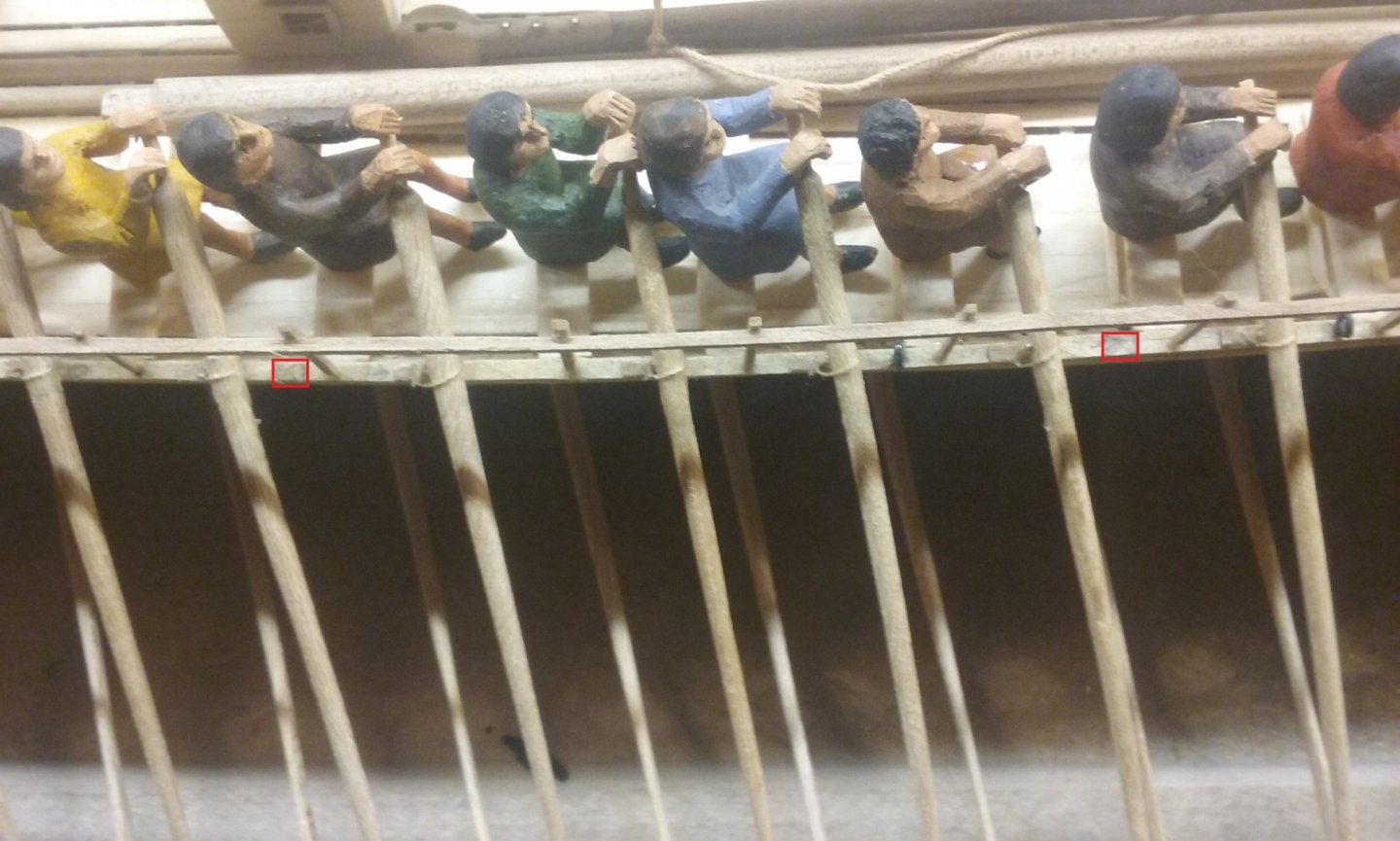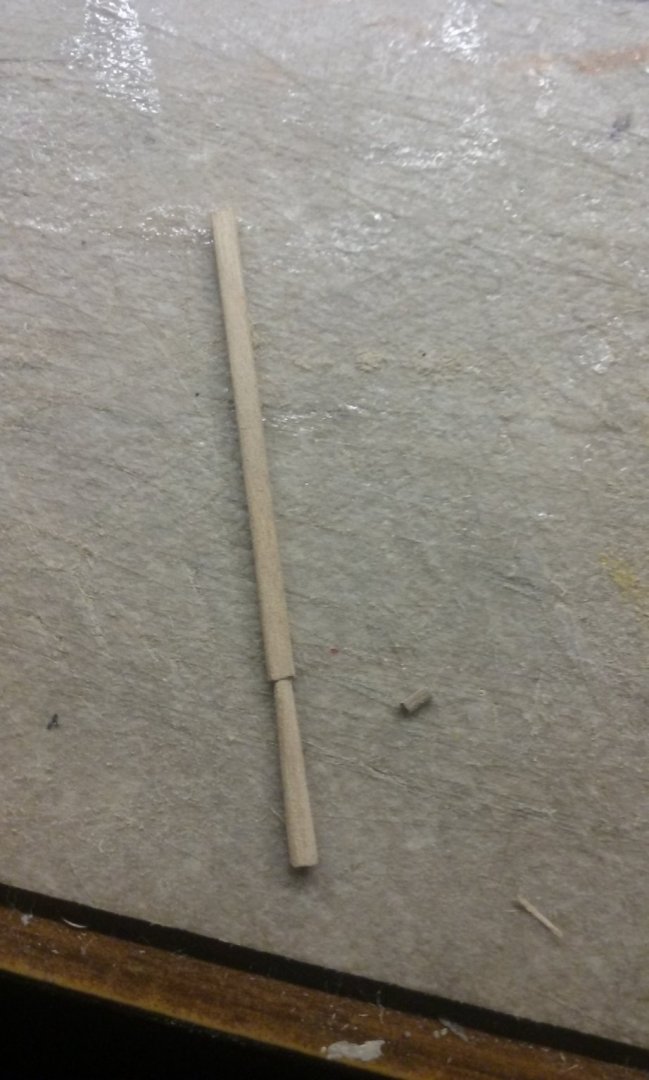-
Posts
7,986 -
Joined
-
Last visited
Content Type
Profiles
Forums
Gallery
Events
Everything posted by Louie da fly
-
You're doing a beautiful job on this, Rodolfo. I've never seen a shroud fixing like that either. On the original Mataro Ship in the Maritime Museum in Barcelona the shrouds are fixed to the hull by pairs of blocks. But I realise you're not doing a precise copy of that model - this is your build, and you make the decisions.
-
What did you use a preposition to end up with for? As Churchill (the Prime Minister, not the Duke of Marlborough) is reported to have said - misplaced prepositions are a grammatical fault up with which I am not prepared to put. I also enjoyed the diversion, but it really was time I got back the serious busines of modelling - it's not supposed to be fun! And I agree about the "put it aside" technique. It has served me well on more occasions than I like to think of (damn! There's that preposition again!) Banyan, thanks for that, mate. At the moment I think I have all the thread I need, of all thicknesses and colours I need. I think it was actually your advice that led me to getting that cotton thread (from Spotlight), for which I'm very grateful. It's high quality stuff.
-
Serves me right. If I'd waited till the benches were in it wouldn't have happened. Still, lesson learned . . . I'll try not to make that mistake again. Me too. At first I really thought I'd have to do everything again. It's often good to sleep on a problem . . . Not where I live - very limited choices unless I send overseas for it, which I didn't want to do. As it is, I have several different thicknesses, all white, which I can dye the corrrect colour. And relatively cheap.
-
Yes, you're quite right, Phil. Blame it on Liteflight - he started it . The one about the Queen sounds vaguely like the old children's rhyme "Rain, rain, go away. Come again another day" and "Mots d'heures gousses rames" is "Mother Goose Rhymes" (Mère l'Oye). But "Let Stalk Strine" is "Let's Talk Australian" spoken with an Aussie accent. It took me years to find out that the "Afferbeck Lauder" who supposedly compiled the book is just "Alphabetical Order". Gloria soame is "glorious home" and terror souse is "terrace house". I'll leave the others for your ingenuity to sort out. (The first to guess them gets an all-expenses paid trip to Outer Mongolia on a yak). By the way, just on an incredibly picky linguistic point, the word réveillez seems to imply the meaning of "Re-awaken", presumably return to wakefulness after being asleep (otherwise why is the syllable re- in there?). Perhaps there was once a word éveiller which meant "to wake" - not from sleep but from the normal human state of unawareness? After all, (at least according to that fount of all knowledge Google Translate) the word éveillé means awake. And yes, éveille would be the second person singular imperative of the verb éveiller. I admit that using tu when addressing the queen is a bit disrespectful, however. But otherwise the joke doesn't work . . . *********************************************************************************************************************************************************************************************************************************************************************************** Now back onto the actual topic of the thread (yes, I've derailed my own thread again), here's some photos of what I've been working on lately. And a warning to the wise - think ahead and don't make things out of sequence! I made the xylokastra (wooden side castles) back in October - December 2018, almost 2 years ago. But more importantly, I made them before I put the oarbenches in. So, guess what? The columns that support the castles don't fit in the spaces between the benches. No matter what I do I can't make them fit. The red squares below show where the columns should go. Unfortunately they don't. (By the way, I neglected to mention that I'd finished all the rope loops attaching the oars to the tholes - you can see them in the photo above) After great rending soul-searching, I finally decided my only option was to re-make the castles. Which was a real pain, because I'd spent so long painting them with pretty patterns and it looked like I was going to have to do it all over again. I slept on it and came upwith a cunning plan - if I kept the top part with all the pretty painting, re-made the columns, cut the arches apart and put them between the columns, I might be able to re-use almost everything if I was prepared to bodge sufficiently. I'd always been unsatisfied with the old columns anyway. I'd just joined them to the top structure by putting a dab of glue on the tops, and right from the start they'd begun to come loose. You can see this on the far right column in the picture above, but they all did it. A more secure method of attachment would be a definite improvement. So I made a whole set of new columns - each carved to the full height of the castle structure from a single piece of wood, so there was no join between the column and the bottom of the arches. Here's the first one in progress. As the column is now made from a single long piece of wood, the capital had to be built up by gluing thin strips around the column and then sanding them to shape. Here is one of the old castles, with the two new end columns and a beam joining them. The beam will be below the floor structure, but as it'll be behind the arches it won't really be visible. Actually, I got the position of the beam wrong. If you look at the next photo I've moved it up to the correct height. So, then I pulled the old castle to bits: The old columns (and their capitals) are likely to get thrown out. I've scored between the arches, but won't separate them until I'm ready to use them. And here is the old superstructure glued to the new column assembly. The Vegemite jar is now mult-tasking as a weight to keep everything in place. And with one of the end panels glued in place. Note - the big worry I had was that the new configuration of the castle structure was wider than the old one because it had to fit between the benches, which was the problem I was trying to solve. But by adding the end columns to the ends of the castle, I'd made it just the right amount longer, and it still looked good. I've since realised that it's better to have the intermediate columns only coming up to the bottom of the castle floor, as then I wouldn't have to change the battlements. So I'll cut those columns shorter before I add them. And here are the results of my experimentation with dye colours. I already had thin cotton in the colour I wanted (the reel on the far left) and my purpose was to dye thicker white thread to match that colour. I had dye in "brown" and "tan" and tried various mixtures. My first attempt is on the far right - just brown in two different strengths and dipped for different times. The dark one I'm keeping for tarred rope - it's not black but dark brown, but that's probably closer to the colour of rope tarred with natural tar. The others are various mixes of the two colours in different strengths, but none of them achieved the colour I wanted. I showed it to my lovely wife (the expert in this sort of thing) and she said "It needs green". "Oh, and you have a packet of green dye that's been hanging around ever since I've known you." She added green dye to the mix - and - perfect! The thread next to the reel on the left is the end result. I'm very happy with it. There's more going to come - I'll add an update in the next few days.
-
What can I say? As usual, superb work, Dick. Beautifully precise work on those exposed deck-beams, too. Pat, Dick's been very naughty. The hulc has probably had more controversy over its form, shape, construction, than any other vessel. But constructing a model of one per the current academic theory - that it had no stempost or sternpost and that the planks were in "reverse clinker" (overlapped upwards) would be interesting.
-
You're right. It's called the "sheer". From https://www.marineinsight.com/naval-architecture/hull-ship-understanding-design-characteristics/ "Sheer: The upward curve formed by the main deck with reference to the level of the deck at the midship, is called sheer. It is usually given to allow flow of green water from the forward and aft ends to the midship and allow drainage to the bilges. The forward sheer is usually more than the aft sheer to protect the forward anchoring machinery from the waves."
-
Probably. French is by no means my first language - but gueux turns out to mean beggars, not peasants . . .
-

Roter Löwe 1597 by Ondras71
Louie da fly replied to Ondras71's topic in - Build logs for subjects built 1501 - 1750
Beautiful clean work, Ondras. You're doing wonderful work. -
That makes a huge difference. Starting to look really good!
- 332 replies
-
- fluit
- abel tasman
-
(and 1 more)
Tagged with:
-
Those shields certainly add to the look of the model. I knew the were alterantely yellow and black, but until you see it you don't really get an idea of how spectacular the original would have looked.
-
Welcome to MSW, Peregrine! There's a good section here on wooden model kits suitable for people just starting out These are all simple enough to try without overwhelming yourself, the instructions are generally pretty clear (and if you have problems, there's probably already a build log on MSW for the same model that will help, and if all else fails ask a question. Everybody's very helpful and supportive.) And when you do decide what to make, be sure to start a build log. Great way to get help and advice (and we get to see nice pictures of your build under way).
-
There's a good overview of models suitable for people just starting out at These generally are good quality kits with clear instructions, and not too difficult for someone new to the game. There's quite a choice here, and with a bit of luck you'll find something that floats your boat (sorry! couldn't resist).
-
One of my favourites was "Queen, queen, wake up the peasants" (Reine, reine, gueux eveille) I also have the famous book "Let Stalk Strine" compiled by Afferbeck Lauder, which includes such gems as "gloria soame" and "terror souse" when talking about architecture . . . and Strine's sub-dialect Rye-wye, with quotes like "The trine stanning at plafform nine goes to Rare Dill"
-
Vegemite jar contains a mixture of Rit dyes for getting the colour of the running rigging right. Reproduction of pictures is ok so long as it's "for study purposes" but shouldn't be taken too far. That's why I put the link in. Just about all the stuff I usually put up is straight from Pinterest, so is probably in the public domain. Oh, got it - there's a book of this kind of thing - called "Mots d'heures gousses rames", which contains such gems as "Un petit d'un petit c'est un eval . . ."
-
Roger, I somehow missed your post re Wooden Boat magazine. I went to their website and did a search for "lateen, Spain" but nothing came up. Do you have the magazine yourself? If so, could you let me know the name of the article (and preferably issue date) when you get a chance? Thanks, mate.
-
She's starting to show some very attractive lines, mate.
- 74 replies
-
- mantua
- thermopylae
-
(and 1 more)
Tagged with:
-
That's avery attractive vessel. I had to google it to find out what it looked like. Then I did an image search for "sailing luzzu" and came up with quite a few models, but also some very interesting antique paintings, which might work as a source for the sail plan - some with a very interesting set of sails - see https://pixels.com/featured/2-luzzu-marco-macelli.html and http://www.artnet.com/artists/nicola-f-crescimanno/a-luzzu-passing-st-pauls-island-in-stpauls-bay-wK6SPXgpTXGIuWVyeq3WTQ2 and https://www.mutualart.com/Artwork/A-luzzo-off-Valetta-by-moonlight--and-A-/68A066740A840864 - and https://www.mutualart.com/Artwork/A-luzzu-at-sea/7E3E8FB3E8304088 - a vertical mast near the bow with two sprits going up diagonally from it, one each side, (or sometimes just one) holding the corners of one or two square sails. That would be an interesting rig to portray . . . I agree with you about the dangers of having an unfurled sail flapping around on deck uncontrolled. Still, maybe these guys are in harbour safe and sheltered from such things. Whether or not I go ahead with the guy climbing the halyard, you've certainly made some interesting suggestions. I couldn't make out the French quote in your signature (and of course Google Translate is useless for colloquial language). "Not of her, Rhone eyes, but us" (??????) Must be poetry. That doesn't have to make sense . . .
-
Well, 3d printing's another great idea. I still don't think in these terms all that easily. I haven't met Roland, but it's quite a few years since I was into re-enacting - the only place I'm likely to have met him would be at the Battle Of Hasting re-enactment in the UK in 2000 or 2006, and if he was there he would have been among 1100 re-enactors. Possible. Certainly an interesting theory, but impossible to prove, particularly since most of these swords have been under the ground for hundreds of years, subject to all kinds of uneven pressures. But certainly a possibility, which I haven't heard of before. I think you're on the right track with the rivets - it's like treenails;most of the time they'd be all but invisible and it's debatable whether they should even be shown on models. It will take a fine hand . . .
About us
Modelshipworld - Advancing Ship Modeling through Research
SSL Secured
Your security is important for us so this Website is SSL-Secured
NRG Mailing Address
Nautical Research Guild
237 South Lincoln Street
Westmont IL, 60559-1917
Model Ship World ® and the MSW logo are Registered Trademarks, and belong to the Nautical Research Guild (United States Patent and Trademark Office: No. 6,929,264 & No. 6,929,274, registered Dec. 20, 2022)
Helpful Links
About the NRG
If you enjoy building ship models that are historically accurate as well as beautiful, then The Nautical Research Guild (NRG) is just right for you.
The Guild is a non-profit educational organization whose mission is to “Advance Ship Modeling Through Research”. We provide support to our members in their efforts to raise the quality of their model ships.
The Nautical Research Guild has published our world-renowned quarterly magazine, The Nautical Research Journal, since 1955. The pages of the Journal are full of articles by accomplished ship modelers who show you how they create those exquisite details on their models, and by maritime historians who show you the correct details to build. The Journal is available in both print and digital editions. Go to the NRG web site (www.thenrg.org) to download a complimentary digital copy of the Journal. The NRG also publishes plan sets, books and compilations of back issues of the Journal and the former Ships in Scale and Model Ship Builder magazines.



